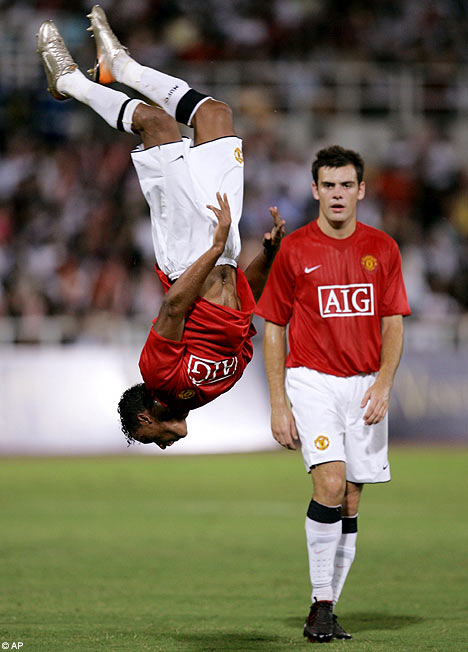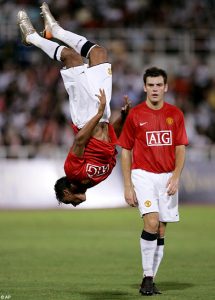Next week I will be attending the NERALLT Fall Conference at St Anselm’s College in Manchester, NH The title of the conference is Flip, but Don’t Flop: Managing the Mix of In-Class and Online Language Learning.
In addition to attending, I have been asked to give the keynote at this event. A lovely honor, to be sure. But… I thought… wait?…a keynote at a meeting that is focusing on flipping? Doesn’t that seem out of place? Shouldn’t (gasp!) the keynote be flipped as well?
So, rather than doing the standard post-prandial Powerpoint palaver, and with the support of the NERALLT Board, I chose something a bit more challenging: I am going to flip the keynote.
Here are four resources (some text, some images, some video) that I would like to have the group review prior to this session. Participants should come ready to discuss these works and compare/contrast this information with their own experiences.
The EDUCAUSE 7 Things You Should Know About Flipped Classrooms .pdf
—a good general overview of what some of the main points surrounding flipping
The Flipped Classroom Infographic
— a visual representation of what flipping looks like
The Pros and the Cons of Flipping
— EDUTOPIA weighs in on what works and what doesn’t work in flipping
A series of short videos about flipping by a teacher who flips her classroom
—Katie Gimbar, a high school math teacher, explains what she does in the classroom.
What are we Flipping To? — What’s the goal of what we are trying to do? How is flipping helping us get there?
During the face-to-face session we will create several smaller work groups. Each group will then work together on a series of questions related to the readings and focused on the L2 classroom reality.
Participants will be given ample time to ask questions of the facilitator, converse, share, create and ultimately report back to the larger group about their learning.
~~~
Have any thoughts, anecdotes, articles you think I should add to the list? Any comments about flipping in general? Feel free to add them here.
I’ll report back later and let you know how “the flip” went. 🙂


Interesting idea – a flipped keynote. Some questions came to mind as I am still thinking this through:
1. How will keynote attendees know beforehand the content they are to review?
2. You mention four resources…are they the five links included in this blog post?
3. Which questions (from the readings) will attendees focus on during the keynote? Will questions be presented at the beginning of the keynote? Or will attendees know of the questions beforehand?
4. What’s the difference between a “flipped keynote” (as you are presenting it here) and a “workshop”?
5. How many people are you anticipating at the keynote and how do you plan to divide up into smaller groups: You choose or do they as to the number of individuals in each group? They choose who they will work with? You choose based on some criteria, etc.?
6. How will members report back to the larger group? Will there be time? And how long will this process take compared to the total amount of time you have for the keynote?
7. Is it worth entertaining the idea that some may attend the keynote without having looked over the materials beforehand? And if so, how might this affect the intended outcome of your keynote?
8. Will attendees “connect the dots”? That is, after having done this activity, will they then be able to transfer this experience and its relevance to the day-to-day classroom experience? Or will this be made explicit somehow during the keynote (as facilitator of the keynote)?
9. Will there be times when you (as facilitator) will need to address the entire group based on evidence that emerges from the attendees? If so, what might this look like?
10. One of the key ideas of doing this activity as a keynote is having attendees focus on the L2 reality. How will you harness these realities that emerge from small group discussions to the broader audience in a more timely fashion? I’m thinking like instead of waiting to hear from each group (again, I’m not sure how many groups you’ll have nor how much time you are dedicating for this), could a Twitter hashtag backchannel be projected to the entire group so that information sharing becomes more fluid? Or will connectivity be an issue?
Thanks for sharing and I look forward to hearing how it goes. ¡Suerte!
Thank you so much for your comment.
As it turned out, I ended up not doing a flipped keynote rather a presentation on flipping one’s assessment practices. (Blog post forthcoming, I promise)
Still, I have done flipped-like “keynotes” before (see links below), and prior to the change in gears on this particular presentation I had put a lot of thought into the process…so let me see if I can answer your questions from that vantage point.
1) Yes, the idea was that they would have content to review prior to the keynote and that they should be ready to talk about it.
2) Yes, I was referring to the sources listed. As I said, there were some last minute changes by the organizers so some of the resources were still being pulled together at the time of this post.
3) In a perfect world, they would know the question beforehand but given the shortness of time, the plans of action in the session was to do the following:
–break them into small groups, making sure at least one person in each group had done the assignment,
–ask each group to summarize (or teach those who had nit done the work) the important points of the readings/videos
–in groups they would each have one question that was just for their group (perhaps about one of the resources, or a topic within all of the resources) and ten one question that was shared between the groups
–reporting out and sharing by the groups on their conversations/learning
–step back and reflect on the whole process as a group
4) I find workshops to be incredibly passive and/or tool or teacher centric. Flipping allows people to have conversations about the topic and lead the conversation in a variety of directions, not just the direction that the workshop leader/presenter might have wanted to pursue…
5) 40-50people in attendance…see #3
6-10)….. see # 3
Here is a link to the post I write about the tilted keynote I did for SWALLT at ASU
This is a post I wrote about a flipped conference that I attended in Italy about OER and Language Learning. There were no “presentations” or power points… just conversations about topics led by people who had written papers (that everyone had read in advance. A wonderful event!
Please let me know if I have not answered your questions or if you have others. As I said, I was set to go to do this and there was a last minute change by the program committee such that I ended up doing a different presentation about assessment practices. Still, I strongly believe the practice of flipping can (and should!) extend to (potentially) mind-and-butt-numbing keynotes at conferences asa way for people to engage ACTIVELY with ideas and theories vs just passively absorbing them….
Cheers!
Barbara
[…] was asked to give a talk at a regional language and technology conference last month. When I last blogged about this, the plan was for the preso to be a keynote, and I was making plans to flip it. The […]